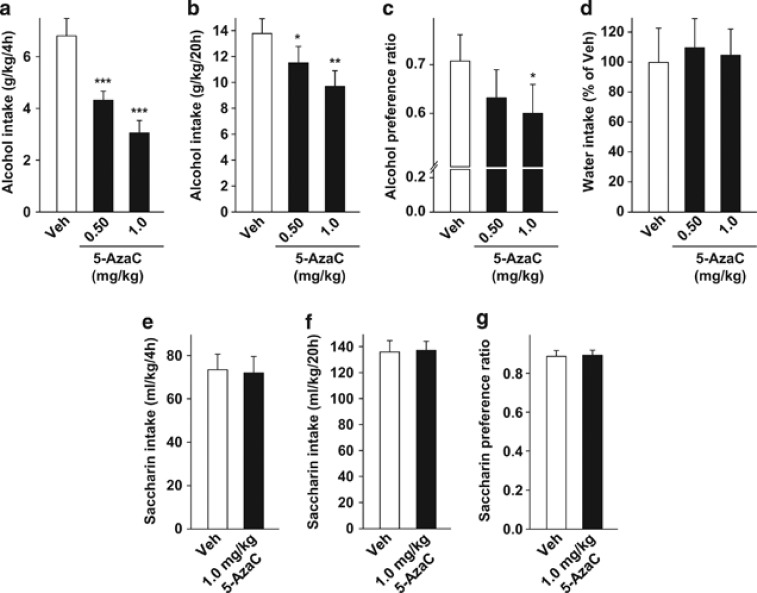Figure 1.
Systemic administration of 5-azacitidine (5-AzaC) reduces excessive alcohol intake, but not saccharin intake, in mice. (a–d) Mice undergoing intermittent access to 20% alcohol 2-bottle choice for 24 h were systemically administered (intraperitoneal, i.p.) with 5-AzaC (0.50–1.0 mg/kg) or its vehicle (Veh) 24, 18, and 2 h before the initiation of the test alcohol-drinking session. (a) Amount of alcohol (g/kg) consumed during the first 4 h of 20% alcohol access. (b) Amount of alcohol (g/kg) consumed during the last 20 h of 20% alcohol access. (c) Preference for alcohol is calculated as the ratio of the volume of alcohol solution intake/volume of total fluid intake during the last 20 h of 20% alcohol access. (d) Water intake during the last 20 h of 20% alcohol access. Results are expressed as mean±s.e.m., *P<0.05, **P<0.01 and ***P<0.001 compared with vehicle. (a–d) n=10. (e–g) Mice with intermittent access to 0.03% saccharin for 24 h in a 2-bottle choice procedure were systemically administered (i.p.) with 1 mg/kg 5-AzaC as described above. Amount of saccharin solution (ml kg−1) consumed during the first 4 h (e) and the last 20 h of access (f). (g) Preference ratio for saccharin solution during the last 20 h of access. Results are expressed as mean±s.e.m. (e–g) n=10.

